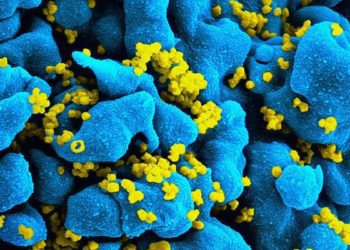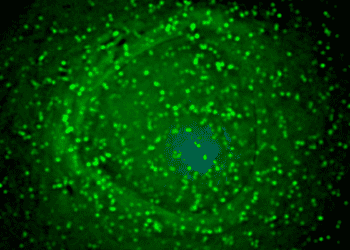Contamination during personal protective equipment removal may be common
1. In this point-prevalence and quasi-experimental study, contamination of skin and clothing was common during personal protective equipment (PPE) removal.
2. Educational session interventions decreased risk of inadvertent contamination by 40% that persisted at 1 and 3 months post-intervention.
Evidence Rating Level: 2 (Good)
Study Rundown: Use of PPE is important to prevent transmission of pathogens within a health care setting. However, if the equipment is not applied or removed properly, there is risk of contamination, and thus transmission, of multi-drug resistant pathogens to other health care-workers and other patients. It has been suggested that a standardized protocol of PPE removal is associated with less inadvertent contamination. However, the literature on this topic is sparse. This study aimed to determine the frequency and sites of contamination on the skin and clothing of personnel during PPE removal, and to evaluate the effect of an intervention on the frequency of inadvertent contamination.
Contamination of skin or clothing occurred 46% of the time during PPE removal. It was more frequent with glove removal as compared to gown removal. Contamination was also more likely to occur when there was an observable lapse in technique, possibly indicating that appropriate technique can decrease risk of inadvertent contamination. An intervention teaching proper removal technique resulted in a 40% decrease in skin and clothing contamination that persisted 1 and 3 months post-intervention. The strengths of this study include using fluorescent lotion to determine whether contamination occurred, and also comparing this to bacteriophage MS2, a non-pathogenic virus, to compare ability to transfer. Limitations of this study include only conducting the quasi-experimental intervention in one medical facility and thus lowers generalizability.
Click to read the study, published today in JAMA Internal Medicine
Relevant Reading: Contamination of healthcare workers’ hands with Clostridium difficile spores after caring for patients with C. difficile infection
In-Depth [quasi-experimental]: This point-prevalence and quasi-experimental study was conducted from October 2014 to March 2015 in 4 Northeast Ohio hospitals. Participants included a convenience sample of health care personnel from these institutions. They conducted PPE removal simulations and used visualization of fluorescent lotion to determine if inadvertent contamination occurred. They then conducted a quasi-experimental study using health care professionals from 1 of the 4 medical centers. The intervention was educational sessions with practice of PPE removal. The primary outcome was frequency and sites of contamination at baseline and after the educational intervention. Chi-squared and Fischer’s exact tests were used to compare contamination rates between institutions and pre- and post-intervention.
Of the 435 simulated PPE removal sessions, 200 (46%) had contamination of skin or clothing. Contamination occurred more frequently during removal of gloves as compared to gown removal (52.9% vs. 37.8%; p = 0.002). When incorrect technique was observed during PPE removal, there was greater occurrence of contamination (70.3% vs. 30.0%; p < 0.001). Incorrect technique included gloves not covering wrists, removing gown by pulling over head, donning gloves before gown and touching outside contaminated side of gloves during removal. The educational intervention sessions significantly reduced contamination post-PPE-removal (60.0% vs. 18.9%, p < 0.001). This reduction in contamination remained at 1 and 3 months post-intervention. Hands were the most frequently contaminated area during glove removal whereas the neck was most often contaminated during gown removal.
Image: CC/Wiki
©2015 2 Minute Medicine, Inc. All rights reserved. No works may be reproduced without expressed written consent from 2 Minute Medicine, Inc. Inquire about licensing here. No article should be construed as medical advice and is not intended as such by the authors or by 2 Minute Medicine, Inc.







